Specimen of the Week : Week 178
By Tannis Davidson, on 10 March 2015
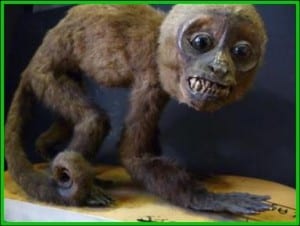 Happy almost springtime! Longer days and brighter skies herald the coming of the change of season. This year the official start of Spring will be marked by a total solar eclipse on March 20 (get your eclipse glasses ready). When the sun re-emerges from behind the moon, both man and beast can rejoice in the return of the light and the promise of rejuvenation.
Happy almost springtime! Longer days and brighter skies herald the coming of the change of season. This year the official start of Spring will be marked by a total solar eclipse on March 20 (get your eclipse glasses ready). When the sun re-emerges from behind the moon, both man and beast can rejoice in the return of the light and the promise of rejuvenation.
Here at the Museum, it is also time to clean the shelves, tidy the office, refresh the displays and present a brand-new exhibition. From 16 March to 27 June join us for Stange Creatures: The art of unknown animals and explore the world of animal representation.
While springtime has many different meanings and associations, including representative animals, one animal is perhaps most symbolic of this time of year. In honour of this most springy of selections, this week’s Specimen of the Week is…
**The Rabbit legs**
1. More or less?
This pile of 33 articulated rabbit hind legs is, I think, an impressive and unusual sight. Multiples of similar items are usually consigned to the store rooms as display space in museums is limited and thus prioritised for unique and distinctive specimens. These rabbit legs are actually part of a larger series of 182! That said, the Grant Museum has many examples of ‘multiples’ on display. Mostly they are preserved in jars – insects, worms, snakes, lizards and even our famous Jar of Moles. It is an efficient and cost-effective way of storing a large number of specimens and makes transporting them easier.
2. The more the brainier
But why have multiples in the first place? This relates to the original purpose of the Museum – for teaching and research in zoology and comparative anatomy, which historically included animal dissection. It is possible that these preserved specimens were intended to be used for dissection by anatomy students. Alternatively, they may also have belonged to a researcher intending to perform a comprehensive study of several individuals.
3. Dawn of the new age of science
By the 1950’s, exciting developments in biochemistry, molecular biology and genetics began to overshadow the tradional whole-organism/comparative-based focus within the field of zoology. The use of models replaced dissections and many university zoology departments closed and subsequently discarded their collections. In the 1970’s and 1980’s the Grant Museum acquired a great deal of this material – including many jars and boxes of ‘multiples’.
4. 21st Century study
Zoology has come full-circle with the subject now including the study of everything from molecules, cells and whole animals to biodiversity of entire ecosystems. The Museum’s collection is used almost daily by students from across UCL and beyond studying a range of subjects including biology, evolution, art history and museum studies.
The collection is also used by visiting researchers. In 2008, researchers from ZSL University of Teesside sampled one of the museum’s sloth skulls to study the microscopic composition of bone to highlight heat induced changes in osseous material. The study (still ongoing) aimed to analyse burned Haitian extinct sloth material (found on an archaeological excavation) to determine whether the sloth bones were burned at a low temperature while still fleshed (cooked as food) or whether their bones were burned as fuel. For this research, destructive sampling (any procedure which causes a permanent change to a specimen) of the sloth skull was undertaken – and only because we have multiples in the collection.
5. Safety in numbers
Beyond having multiple specimens (or parts of specimens) of the same species for research or practical study purposes, a curator may feel comforted knowing that there are ‘more in the store’ just in case. Many of the Grant Museum specimens are used for handling – both in the museum (public events, school groups , UCL students, visiting researchers) and out around London on outreach visits. Invariably, the occasional specimen may suffer a break or deteriorate as a result of handling. Thus it is of great value to have ‘back-up’ specimens so that we can continue to offer object-based learning to our visitors.
Tannis Davidson is Curatorial Assistant at the Grant Museum of Zoology
One Response to “Specimen of the Week : Week 178”
- 1
 Close
Close


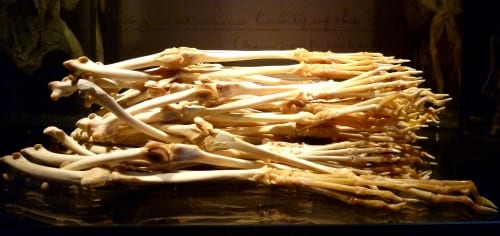
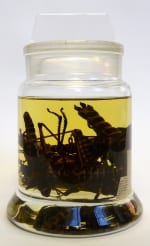
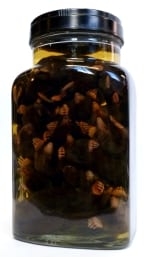
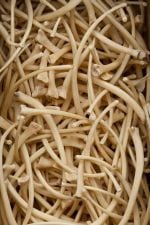
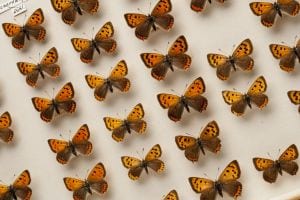
[…] tell more modern tales of use in the collection for teaching (SOTW 178), undergoing conservation work (Return of the Rhino), or being featured in exhibitions (SOTW […]